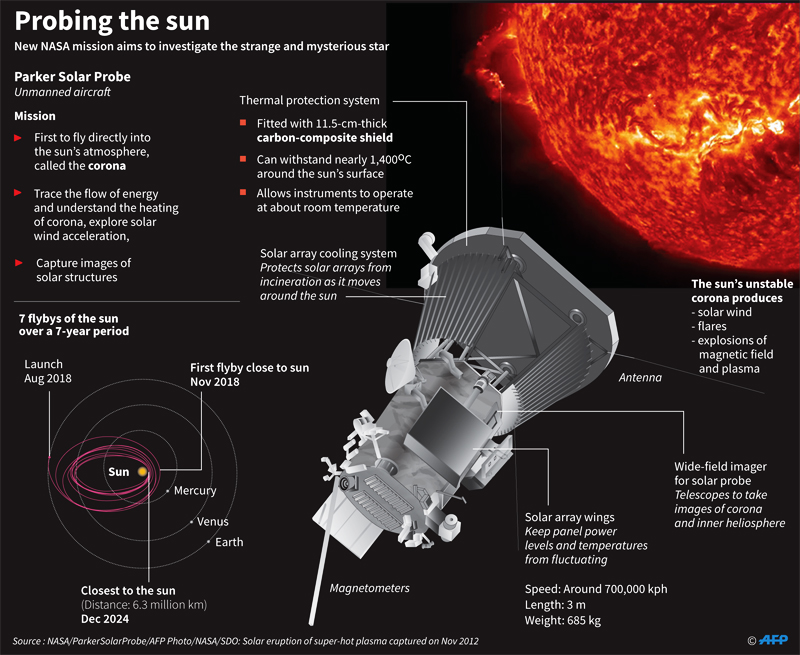

Tampa: Nasa counted down on Friday to the launch of a $1.5 billion spacecraft that aims to plunge into the Sun’s sizzling atmosphere and become humanity’s first mission to explore a star. The car-sized Parker Solar Probe is scheduled to blast off on a Delta IV Heavy rocket from Cape Canaveral, Florida on Saturday.
The probe’s main goal is to unveil the secrets of the corona, the unusual atmosphere around Sun. Not only is the corona about 300 times hotter than the Sun’s surface, it also hurls powerful plasma and energetic particles that can unleash geomagnetic space storms and disrupt Earth’s power grid. The probe is protected by an ultra-powerful heat shield that is just 4.5 inches thick (11.43 centimetres).
The heat shield is built to withstand radiation equivalent up to about 500 times the Sun’s radiation here on Earth.
Even in a region where temperatures can reach more than a million degrees Fahrenheit, the sunlight is expected to heat the shield to just around 2,500 degrees Fahrenheit (1,371 degrees Celsius).
Scorching, yes? But if all works as planned, the inside of the spacecraft should stay a cooler 85 F (29 C). The goal for the Parker Solar Probe is to make 24 passes through the corona during its seven-year mission.
The tools on board will measure the expanding corona and continually flowing atmosphere known as the solar wind, which solar physicist Eugene Parker first described back in 1958. Parker, now 91, recalled that at first, some people did not believe in his theory.
But then, the launch of Nasa’s Mariner 2 spacecraft in 1962 — becoming the first robotic spacecraft to make a successful planetary encounter — proved them wrong.
Scientists have wanted to build a spacecraft like this for more than 60 years, but only in recent years did the heat shield technology advance enough to be capable of protecting sensitive instruments, according to Fox.
Tools on board will measure high energy particles associated with flares and coronal mass ejections, as well as the changing magnetic field around the Sun.
When it nears the Sun, the probe will travel rapidly enough to go from New York to Tokyo in one minute — some 700,000 km per hour, making it the fastest human-made object. — AFP
Oman Observer is now on the WhatsApp channel. Click here



